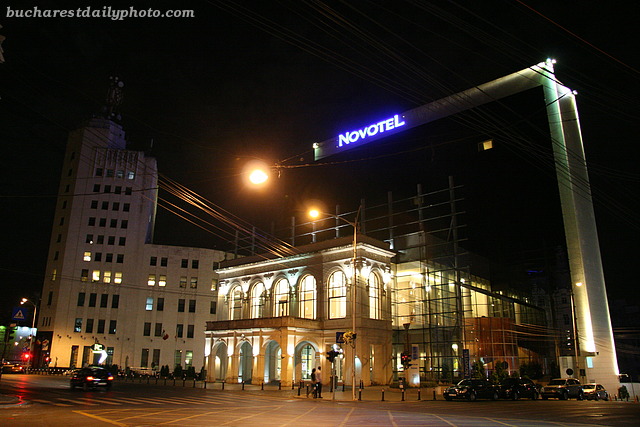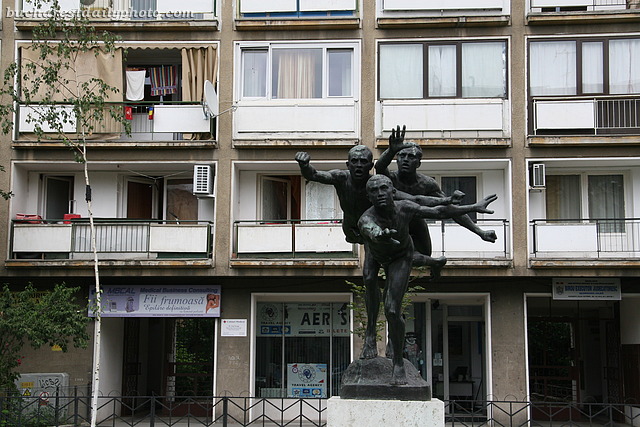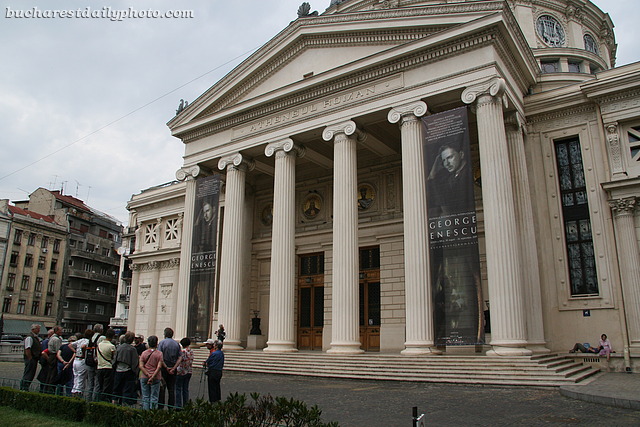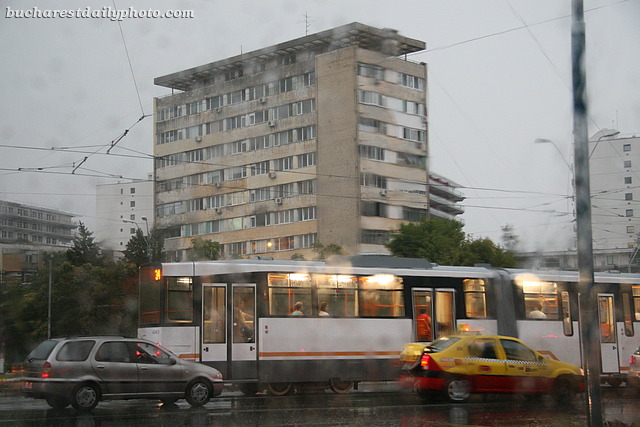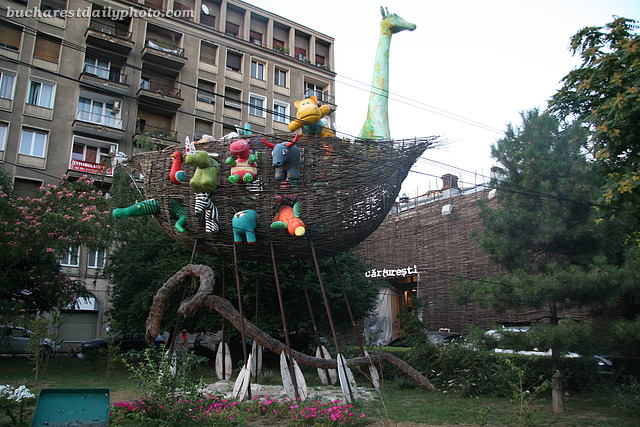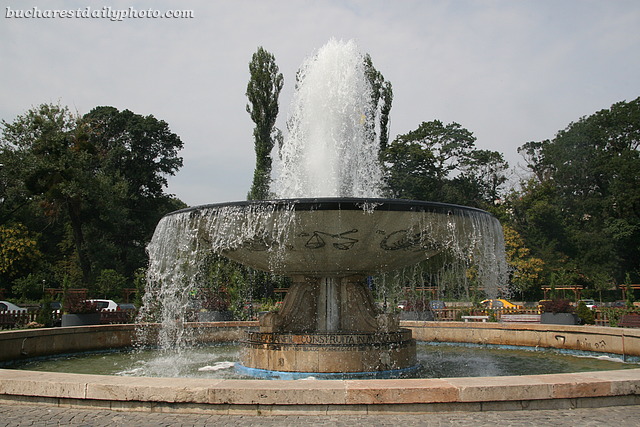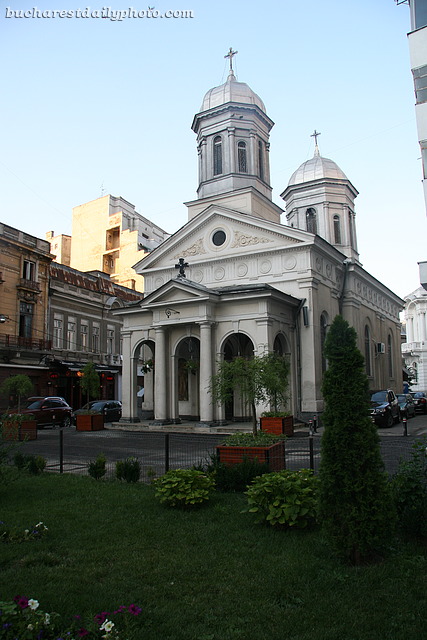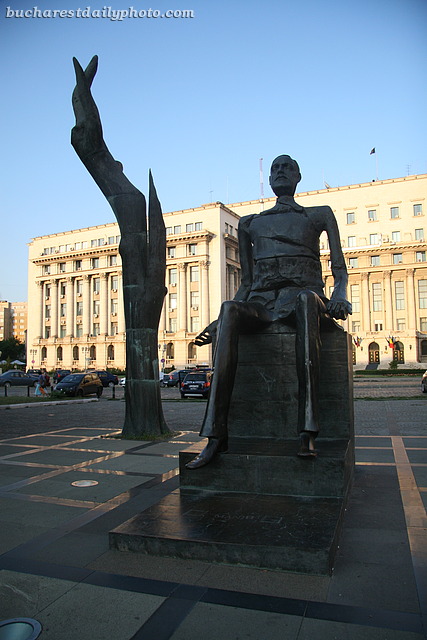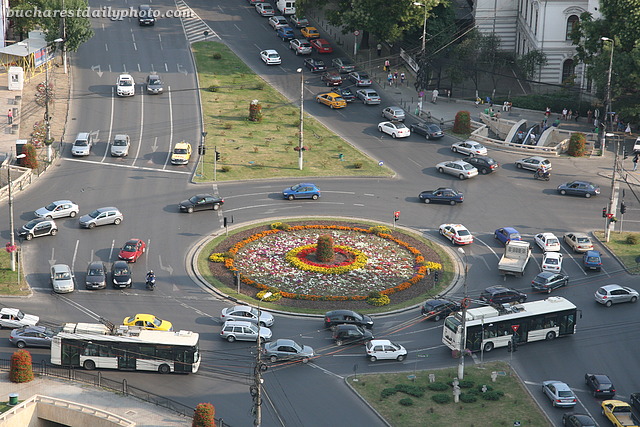Versiune în română
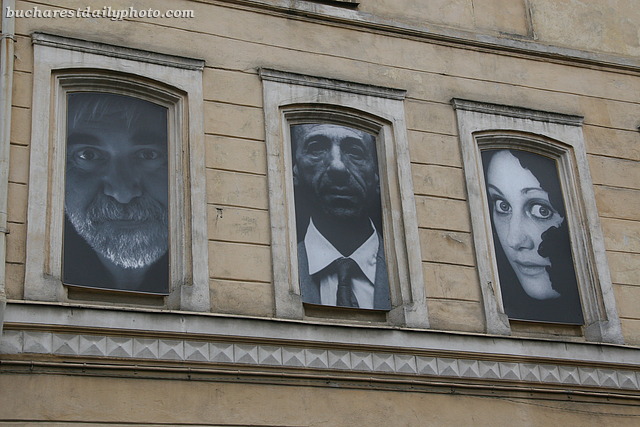 If you follow Arthur Verona Street from Magheru Bouvelard to Pitar Moş take a look at the yellowish building on the right. Up in the false windows of this building there are 19 photographs, portraits of people, left hanging there from last year. The exhibition is by photograph Dan Hayon and is called “The people next to you”. They were installed in July 2008 as part of an event called Street Delivery which started in 2005 and has become an annual event. During Street Delivery one street is closed to traffic for two days and becomes a pedestrian promenade; their slogan is “Closing the street for cars and opening it for people” All sorts of events and activities take place, some with themes like urbanism and environment, activities for children, crafts, art installations, exhibitions, concerts, movie projections, book launchings, street art etc. The effect of the portraits is quite striking and I’m not sure that my photo does them justice.
If you follow Arthur Verona Street from Magheru Bouvelard to Pitar Moş take a look at the yellowish building on the right. Up in the false windows of this building there are 19 photographs, portraits of people, left hanging there from last year. The exhibition is by photograph Dan Hayon and is called “The people next to you”. They were installed in July 2008 as part of an event called Street Delivery which started in 2005 and has become an annual event. During Street Delivery one street is closed to traffic for two days and becomes a pedestrian promenade; their slogan is “Closing the street for cars and opening it for people” All sorts of events and activities take place, some with themes like urbanism and environment, activities for children, crafts, art installations, exhibitions, concerts, movie projections, book launchings, street art etc. The effect of the portraits is quite striking and I’m not sure that my photo does them justice.

